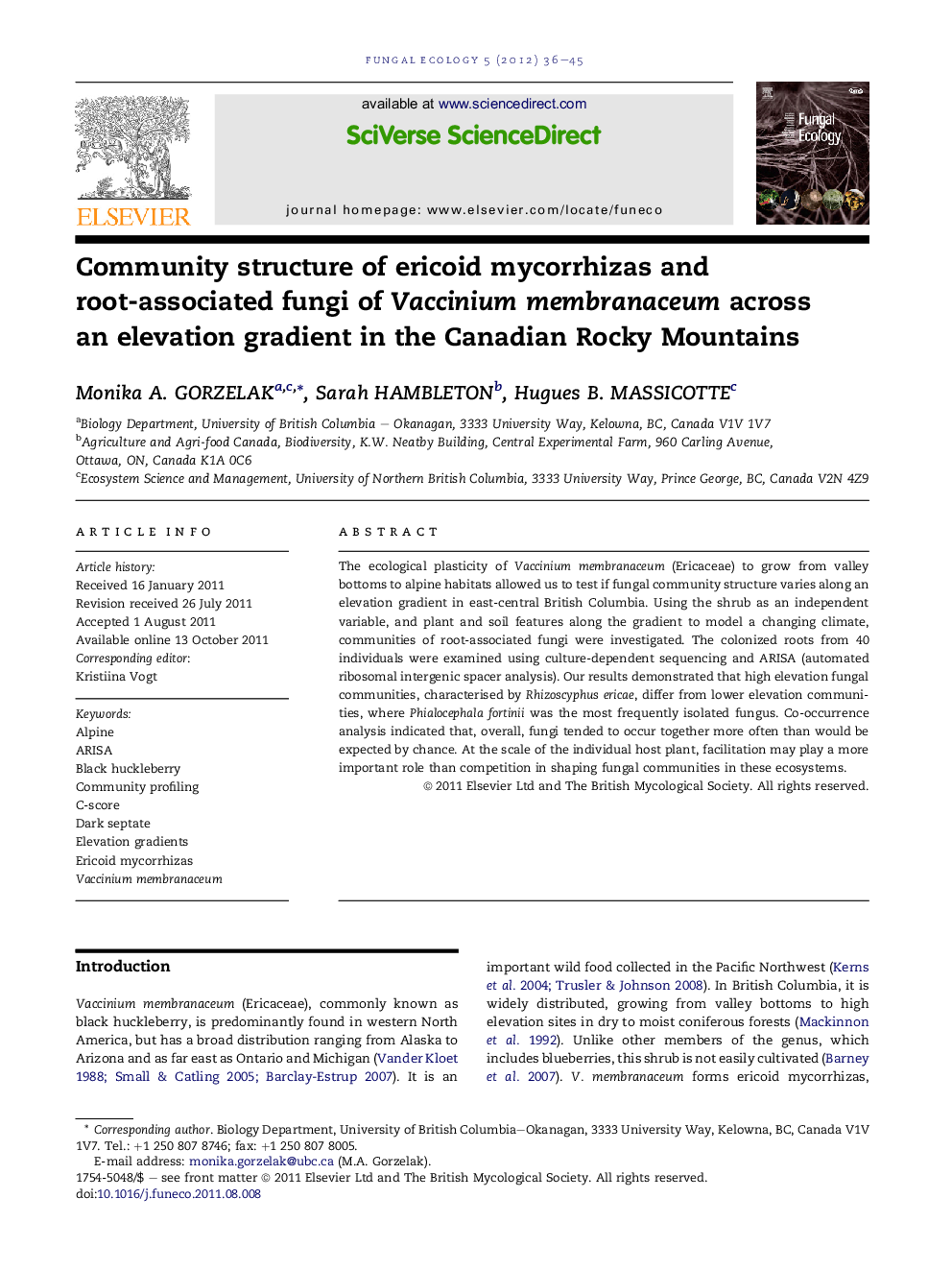| Article ID | Journal | Published Year | Pages | File Type |
|---|---|---|---|---|
| 2053618 | Fungal Ecology | 2012 | 10 Pages |
The ecological plasticity of Vaccinium membranaceum (Ericaceae) to grow from valley bottoms to alpine habitats allowed us to test if fungal community structure varies along an elevation gradient in east-central British Columbia. Using the shrub as an independent variable, and plant and soil features along the gradient to model a changing climate, communities of root-associated fungi were investigated. The colonized roots from 40 individuals were examined using culture-dependent sequencing and ARISA (automated ribosomal intergenic spacer analysis). Our results demonstrated that high elevation fungal communities, characterised by Rhizoscyphus ericae, differ from lower elevation communities, where Phialocephala fortinii was the most frequently isolated fungus. Co-occurrence analysis indicated that, overall, fungi tended to occur together more often than would be expected by chance. At the scale of the individual host plant, facilitation may play a more important role than competition in shaping fungal communities in these ecosystems.
► Fungal community of Vaccinium membranaceum roots compared over an elevation gradient. ► High elevation community was significantly different from low elevation community. ► Fungi co-occurred significantly more often than would be expected by chance. ► Facilitation may structure these ericoid mycorrhizal systems.
